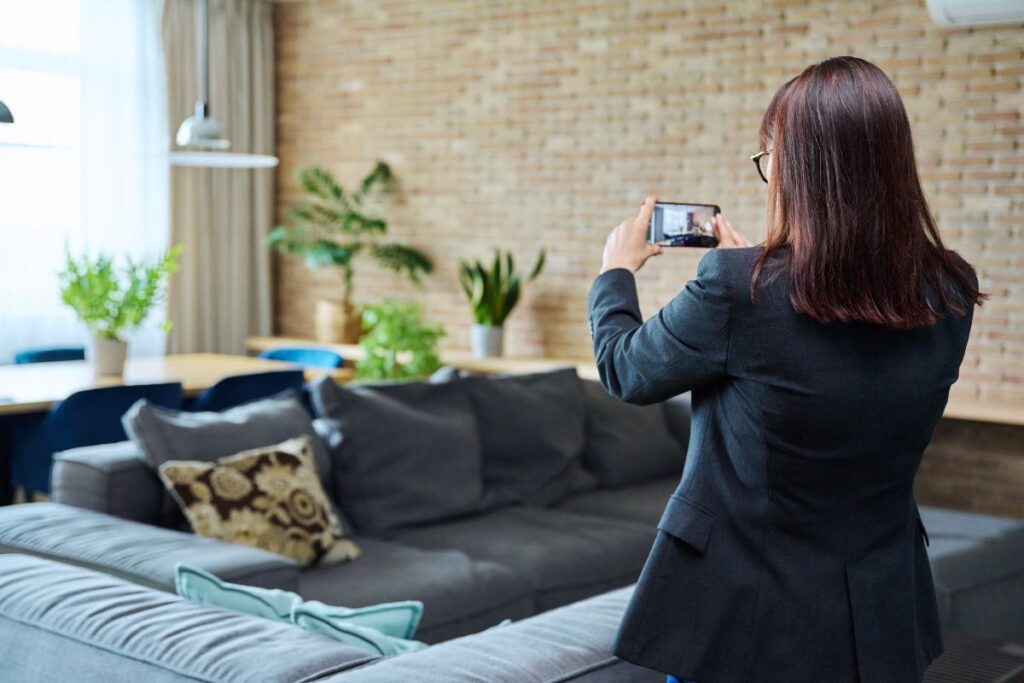Great listing photos don’t happen by accident. They’re the product of choices — composition, light, preparation, and technical polish — that a skilled real estate photographer makes to help a property capture attention and convert views into showings. This guide walks through what makes listing photos perform on Zillow, Realtor.com, and MLS systems, how to prepare a shoot, technical and creative best practices, and a short real-world case study that shows the payoff.
Why Photos Matter
Most buyers begin online; photos are the first impression and often the deciding factor whether a shopper clicks the listing or scrolls past. Industry research consistently shows that professional photography increases online views, shortens days on market, and can raise final sale prices — a core reason sellers and agents invest in a trusted, reliable real estate photographer.
Platform Rules You Must Follow (Zillow, Realtor.com, MLS)
Each platform has basic image requirements and content rules. Meeting those avoids rejections and ensures your photos display crisply across devices.
- Zillow recommends high-resolution images (around 1536×1152) with formats like JPG, PNG, GIF, and TIF. The platform also enforces minimum dimensions and file size limits to maintain quality thumbnails and proper display.
- Realtor.com offers recommended image dimensions for profile and cover photos and enforces file-size and format rules for listings to ensure consistent presentation.
- MLS boards vary by region but generally require JPEG files in landscape format (4:3 or 3:2 aspect ratio) with minimum pixel dimensions of about 1024×768. They may also have policies about ownership rights and publishing permissions.
Obeying platform specs is low-hanging fruit: a technically correct photo will display cleanly and prevent auto-resizing or cropping issues.
The Composition Recipe: What Actually Makes a Photo “Pop”
A strong listing photo balances technical quality with storytelling. Here are the ingredients an experienced real estate photographer uses:
1. Light First
Natural light wins. Photographers open blinds, shoot with diffuse daylight, and avoid mixed-color lighting that confuses white balance. For exteriors and dramatic interiors, twilight photos taken during the blue hour create emotional pull.
2. Clean, Decluttered Scenes
Empty countertops, removed personal items, and tidy furniture make rooms look larger and allow viewers to visualize themselves in the space. A real estate photographer will often provide a prep checklist or coordinate light staging.
3. Strong Composition and Angle Choices
Use wide-angle lenses with restraint — around 16–24mm on a full-frame camera — to show depth without distortion. Shooting from about chest height helps capture the room naturally.
4. Emphasize Flow and Function
Capture sightlines that show how rooms connect. A great kitchen shot often includes a glimpse of the dining or living area, while a bedroom photo benefits from showing natural light and scale.
5. HDR and Exposure Blending
High dynamic range (HDR) or exposure blending preserves detail in both bright windows and shadowed interiors. The result is balanced, natural-looking photos that perform well online.
6. Color Accuracy and Subtle Editing
Accurate colors and clean editing build trust. Avoid oversaturated images — buyers can tell when photos are unrealistic.
Technical Checklist for Upload-Ready Images
- File format: JPEG (high-quality), sometimes PNG/TIF when permitted
- Aspect ratio: Landscape (4:3 or 3:2) preferred for most platforms
- Pixel dimensions: Aim for 1536×1152 to 2048×1536 for crisp display
- File size: Keep under 8–50 MB depending on platform requirements
- Orientation: Horizontal photos generally perform better in gallery views
Optimized images load faster and rank higher in listing algorithms and image search results, helping visibility.
Creative Value-Adds That Elevate a Listing
- Twilight or dusk photography: Adds warmth and emotion that draw viewers in.
- Drone imagery: Highlights lot size, location, and surrounding amenities — powerful for properties near water, parks, or scenic areas.
- Virtual staging: Makes empty homes feel inviting; ensure MLS compliance if digitally enhanced.
- 3D tours and floor plans: Buyers increasingly expect immersive tools alongside photos.
How Many Photos Are Enough?
There’s a balance between too few and too many. Research shows listings with around 20–27 curated, high-quality photos perform best. Too few make the property seem incomplete; too many can overwhelm potential buyers.
Pricing, ROI, and Why Hiring a Pro Makes Sense
Professional real estate photography typically pays for itself. Homes with professional photos attract more views, sell faster, and often achieve higher offers. For agents, using a proven, industry-leading real estate photographer strengthens their brand and builds client trust.
Real-World Example: Case Study
The Situation: A 3-bed, 2-bath suburban home had been listed for three weeks with average photos and minimal engagement.
Action: The agent hired an experienced real estate photographer to re-shoot the home, adding twilight exteriors, drone shots, and professionally edited interiors.
Outcome: Within two weeks of uploading the new photos to MLS, Realtor.com, and Zillow, the listing received double the online views, multiple offers, and went under contract in just 10 days — faster than the regional average. The agent noted that the upgraded visuals made the home appear more spacious and welcoming, resulting in stronger offers.
Practical Pre-Shoot Checklist for Sellers and Agents
- Declutter and depersonalize each room.
- Replace any burnt bulbs; match color temperature of lighting.
- Schedule photos mid-morning or early afternoon for even natural light.
- Remove pets and personal items from view.
- Make sure all doors, blinds, and closets are operational.
- Communicate key selling features to the photographer (e.g., new renovations, view, or special materials).
A short prep session can transform results and make the session smoother for everyone.
FAQs
Q: How many photos should a listing have?
A: Between 20–27 high-quality, curated images is ideal for engagement.
Q: Should I use HDR?
A: Yes, when done professionally. HDR helps balance lighting and retain details without overprocessing.
Q: Do drone shots make a difference?
A: Absolutely. Aerial photos increase engagement, especially for properties with land, scenic views, or location advantages.
Q: Can I virtually stage photos for MLS?
A: Many MLS systems allow it, but check your local rules. Virtual staging should always be disclosed to maintain transparency.
Final Takeaways
The images on Zillow, Realtor.com, and MLS are the digital handshake between a property and its potential buyers. Meeting technical standards ensures visibility, but composition, lighting, and editing separate standout listings from average ones. Partnering with Pro Photo Listings — a proven, results-driven real estate photography company — ensures your property is showcased at its absolute best, turning casual browsers into serious buyers.


